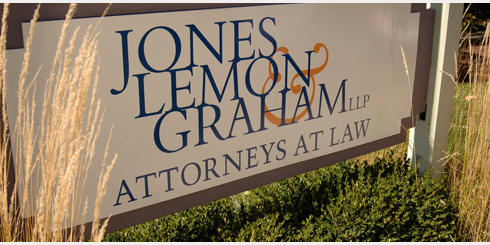by Christopher Graham and Joseph Kelly

Today’s post is about a federal case in Iowa, Progressive Casualty Ins. Co. v. FDIC, et al, Case No. C 12-4041-MWB (N.D. Iowa Jan. 23 2015), which explains the happy hog pictured above. But you won’t hear any squeals of joy from the insurer about the decision in this case.
Here’s the scenario: D&O policy is issued without a regulatory exclusion; bank fails; FDIC is appointed receiver; it sues directors and officers for negligence and otherwise; they ask D&O insurer to pay for a defense; insurer denies coverage based on an insured-versus-insured exclusion, but advances defense costs while reserving rights; coverage litigation follows.
The decision: This Iowa court held that the insured-versus-insured exclusion did not apply to the FDIC’s Claim. It granted a summary judgment for the FDIC and directors and officers, finding that (1) the exclusion’s “on behalf of . . . the Company” wording is “unambiguous,” (2) the exclusion’s purpose—as shown by the wording—is to except collusive suits from coverage, (3) there was no evidence of collusion, (4) there’s no ambiguity merely because there are conflicting court decisions about what the exclusion means, and (5) with no ambiguity, there’s no need to consider “extrinsic” evidence. Those five points set this case apart from other recent cases addressing the exclusion, including some finding similar wording ambiguous.
The wording: The exclusion provided:
The Insurer shall not be liable to make any payment for Loss in connection with any Claim by, on behalf of, or at the behest of the Company, any affiliate of the Company or any Insured Person in any capacity except where such Claim is brought and maintained:
(1) in the form of a cross-claim or third-party claim for contribution or indemnity which is part of and results directly from a Claim which is not otherwise excluded by the terms of the Policy;
(2) by an Insured Person solely as a customer of the Company; provided such Claim is brought independently of, and totally without the solicitation, assistance, participation, or intervention of any other Insured; or
(3) by a security holder of the Company as a derivative action on behalf of the Company or such affiliate; provided such Claim is brought independently of, and totally without the solicitation, assistance, participation, or intervention of any Insured of any affiliate of the Company. (Emphasis added).
The court’s explanation: The court explained its decision against the insurer as follows:
(1) The FDIC’s Claim was not a Claim “by the Company”. Company as defined in the policy didn’t include a receiver. When the insurer addressed receivers or successors, moreover, it used explicit wording. As the court pointed out, the policy definition of “Financial Impairment” included “appointment of any state or federal official, regulatory agency or court of any receiver . . . .” The policy by express language also extended coverage to “legal representatives or assigns” of Insured Persons. “Thus, when the [bank’s] Policy intended to address coverage issues relating to ‘receivers’ and other successors to the Bank, it expressly identified such successors.”
(2) The FDIC’s Claim also was not by “any affiliate of the Company” and wasn’t by an Insured Person. The FDIC as receiver wasn’t an affiliate. Nor was the Claim by any Insured Person—obviously! The insurer didn’t argue otherwise on either point.
(3) The FDIC’s Claim was not “at the behest of the Company.” That phrase was undefined—so the dictionary definition—a “command, injunction or bidding”—controlled. “The insurer has not asserted as an undisputed fact any involvement of the Bank in commanding or bidding the FDIC-R to bring its claims against the [directors and officers],” said the court. It didn’t even argue the FDIC’s Claim was “at the behest of the Company.”
(4) The Claim was not “on behalf of . . . the Company. Without a policy definition, an Oxford dictionary definition controlled—defining “on behalf of” as, “On the part of [another], in the name of, as the agent or representative of, on account of, for, instead of (With the notion of official agency)” (brackets in original). The FDIC’s Claim, said the court, wasn’t “on behalf of . . . the Company . . . ,” as that phrase is commonly understood based on that standard definition. There also was “no basis to graft onto this interpretation of ‘on behalf of . . . the Company’ an action by a receiver or other successor.’” Indeed, “when the [bank’s] Policy intended to address coverage issues relating to ‘receivers’ and other successors to the Bank, it expressly identified such successors.”
(5) Policy wording demonstrated that “the intent of the ‘insured-versus-insured exclusion’ was to preclude collusive suits by and among the Company and Insured Persons, such as the [directors and officers], to recover for mismanagement.” “This intent is apparent from the interplay between the definition of Claim, inter alia, as a civil lawsuit against an Insured Person or against the Company’ and the ‘insured vs. insured exclusion,’ which bars coverage ‘by, on behalf of, or at the behest of’ the same entities.”
(6) The FDIC’s Claim was not “collusive”. “[I]t was brought . . . well after [the] Bank was closed” and under the FDIC’s “independent statutory authority”; and the insurer “identified no evidence to suggest or show beyond dispute that the [FDIC as receiver’s] lawsuit involved the solicitation, assistance, involvement, or participation of anyone from the Bank in bringing or maintaining the claims.”
(7) O’Melveny & Meyers v. FDIC, 512 U.S. 79 (1994), the insurer’s principal authority, was irrelevant. Like other insurers, this insurer argued that under O’Melveny, the FDIC as receiver “steps into the shoes” of a failed bank and, thus, its Claim is “on behalf of” the Company (the bank) and within the Insured-versus-insured exclusion. But, as the Iowa court explained:
a. O’Melveny didn’t address a D&O policy, let alone an insured-versus-insured exclusion, and wasn’t even an insurance case;
b. Equating “on behalf of” with “stepping into the shoes” as used in O’Melveny was a “hypertechnical,” rather than “reasonable viewpoint” as required under Iowa law; and
c. O’Melveny didn’t equate “steps into the shoes” with “on behalf of”, didn’t address what “on behalf of” means or even the word “behalf”, didn’t hold (as the insurer argued) that “the claims by the FDIC are necessarily claims of or that belonged to a failed bank”, didn’t address federal law providing that the FDIC succeeds not only to the rights of the failed institution, but to those “of any stockholder, member, accountholder, depositor, officer, or director of such institution with respect to the institution and the assets of the institution”, and didn’t consider whether federal law authorized a suit by the FDIC on its own behalf, rather than just by “stepping into the shoes” of a failed bank.
(8) There is no ambiguity merely because there are conflicting court decisions about what the exclusion means and, thus, there is no need to consider extrinsic evidence. This was the opposite of what the Eleventh Circuit concluded in St. Paul Mercury Ins. Co. v. FDIC, et al, Case No. 13-14228 (11th Cir. 2014), decided under Georgia law and involving the scenario of this Iowa case. The Georgia district court in St. Paul Mercury held, moreover, that virtually identical “on behalf of . . . the Company” wording unambiguously excluded coverage for the FDIC’s suit—the opposite of this Iowa federal court’s holding finding coverage; and it refused to consider extrinsic evidence or allow further discovery. The Eleventh Circuit found ambiguity and, therefore, reversed and returned the case to the Georgia district court for consideration of evidence that may resolve it. It also explained that “the most compelling argument” for ambiguity was “that the courts which have addressed similarly worded insured v. insured exclusions have reached different results.”
The Iowa court attributed the Eleventh Circuit’s decision to differences between Iowa and Georgia law about reading insurance policies and explained further: “While I acknowledge that different courts have reached different conclusions on whether or not the ‘insured vs. insured exclusion’ bars coverage for claims by the FDIC, I do not believe that the difference of opinion establishes ambiguity as to the meaning of the exclusion, even if it creates some uncertainty about the construction or legal effect of the exclusion.”
Other IvI arguments: The parties disputed whether the shareholder derivative exception to the IvI exclusion applied; in arguing for the exception, the FDIC stressed that its claims as receiver were at least in part on behalf of shareholders, as provided by statute.
The parties also disputed whether extrinsic evidence showed that the exclusion “was intended to bar claims such as the [FDIC as receiver] has brought against the D&O Defendants and whether extrinsic evidence can be considered at all”; “whether the ‘reasonable expectations’ of the D&O Defendants demonstrate that the ‘insured vs. insured exclusion’ does not apply and whether such ‘reasonable expectations’ are relevant”; and “whether the industry practice demonstrates that ‘regulatory exclusions,’ rather than ‘insured vs. insured exclusions,’ are used when the insurer intends to bar coverage for claims by the [FDIC as receiver] and whether any evidence concerning ‘regulatory exclusions’ is relevant, where [the bank’s] Policy contained no such exclusion.”
But the court didn’t address any of the above arguments as it was unnecessary given its holding.
“Investment loss carve-out”: The Iowa court also addressed an “investment loss carve-out” in the Loss definition, holding as a matter of law against the insurer and for the FDIC and directors and officers that the carve-out didn’t apply. We plan to cover this part of the court’s decision soon in a separate post.
What’s different about this case: The Iowa court’s decision about the exclusion is distinct from other recent cases in that it held the exclusion unambiguously inapplicable to FDIC claims as receiver.
While the Iowa court attributed the Eleventh Circuit’s different result in St. Paul Mercury to “differences” between Iowa and Georgia law for determining the meaning of policy wording, a close reading of the law cited in the opinions suggests those differences really were matters of form rather than substance. At least from the opinions, it doesn’t appear that the FDIC argued that the insured-versus-insured exclusion was unambiguous. Neither the Eleventh Circuit, nor Georgia district court opinions in St. Paul Mercury address the meaning of “on behalf of” in any way similar to the Iowa court. Whether the policy, outside of the exclusion, addressed receivers or successors explicitly like the policy in the Iowa case isn’t stated in the opinions.
In our prior blog post here, about W Holding Company, et al v. AIG Insurance Company – Puerto Rico, Case No. 12-2008 (1st Cir. Mar. 31, 2014), the directors and officers won the initial “IvI” exclusion round as the insurer by preliminary injunction was required to advance their defense fees, albeit without waiving the right to repayment. But the First Circuit didn’t decide whether the exclusion applied to FDIC’s claims, only that there was a “likelihood” of a “remote possibility of coverage”; that’s all that was required in considering a preliminary injunction motion. There apparently was no argument that the IvI exclusions was unambiguous and no need to make the argument.
In our prior blog posts here about Hawker v. Bancinsure, Case No. 1:12-cv-01261 (E.D. Ca. Apr. 7, 2014), and here about Bancinsure v. McCaffree, et al., Case No. 12-2110-KHV (D. Kan. Feb. 27, 2014), the insurer won an initial round that the IvI exclusion applied, but the exclusion explicitly referenced a Claim by a “receiver.” Ironically, that insurer, Bancinsure, now known as Red Rock Insurance Co., later entered into a receivership itself! With the “receiver” included in the IvI exclusion, the FDIC obviously couldn’t make the same kind of argument as in the Iowa case.
In St. Paul Mercury Insurance Co. v. Hahn, Case # SACV 13-0424 AG (RNBx) (October 8, 2014 C.D. Cal.), a California federal court addressed “by or on behalf of” wording in a scenario like the Iowa case and granted a summary judgment for the FDIC that the IvI exclusion was inapplicable. Like the Iowa court, the Hahn court found O’Melveny irrelevant. Unlike the Iowa court, the Hahn court held that the exclusion was ambiguous, rather than unambiguous. But, under California law, ambiguity meant that the policy must be construed against the D&O insurer. So the insurer still lost.
From the opinion in Hahn, it appears that the FDIC didn’t argue that the exclusion was unambiguous. Like the Eleventh Circuit, the Hahn court found the exclusion ambiguous at least in part because there were conflicting decisions about whether it applied to claims by the FDIC and similar receivers. As the Hahn court stated, “the question presented in this case has been litigated numerous times over many years across the country.” And, “There can be little doubt that repeated disputes over the IvI exclusion have placed insurers on notice that it is ambiguous” (Emphasis added).
After highlighting the FDIC’s statutory power as receiver to sue on behalf of a failed bank’s shareholders, the Hahn court also stated that it “was unconvinced that the Shareholder [Derivative] Exception [to the IvI exclusion] does not apply to FDIC-R’s [(as receiver)] claims.” It thus “construe[d] the IvI Exclusion to allow coverage for [those] claims . . . .” The Hahn court stated, “The Shareholder Exception ‘evidences an intent to place on insurer the risk for actions against the D&O’s based upon allegations of mismanagement, waste, fraud, or abuse of a failed institution’” (quoting FDIC v Bancinsure, No. CV 12-09882, 2014 U.S. Dist. LEXIS, at * 26 (C.D. Cal. June 16, 2014)). The Iowa court had no need to address this issue.
The uncertainty of what a D&O policy gives bank directors and officers when a bank fails: Except when there were IvI exclusions explicitly addressing receiver claims, no insurer won outright any of the cases discussed above; but the FDIC and directors and officers won two of them outright on summary judgment. Any D&O insurer relying on an IvI exclusion to exclude FDIC claims as receiver may be in for an unpleasant surprise. But, as these cases show, brokers and bank risk managers, directors, and officers can’t necessarily count on D&O insurers to step up when disaster hits and the FDIC sues—even absent a regulatory exclusion or explicit IvI wording addressing receiver Claims. Isn’t it time for a change to how D&O policies address this issue? We’ll have more on this on a future post.
Tags Iowa, directors and officers liability insurance, D&O insurance, insured-versus-insured exclusion, IVI exclusion, derivative suit exception, insured versus insured exclusion, FDIC, FDIC-R, failed bank, directors, officers , investment loss carve out, Loss, community banks, regulatory exclusion, collusion, Company defined, “on behalf of”


